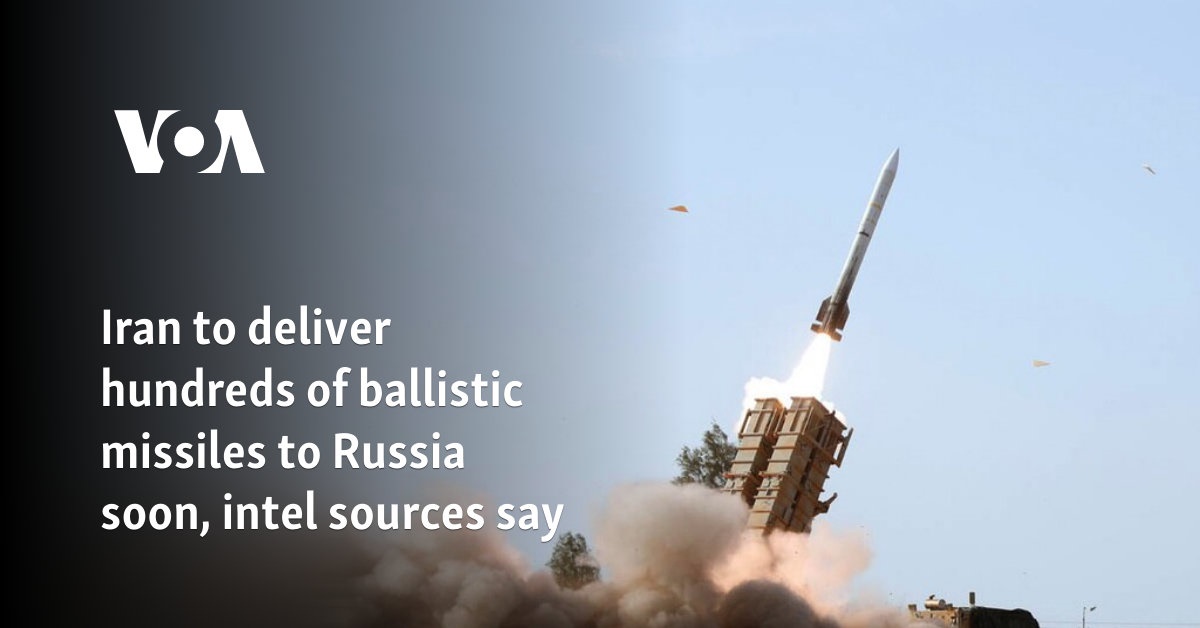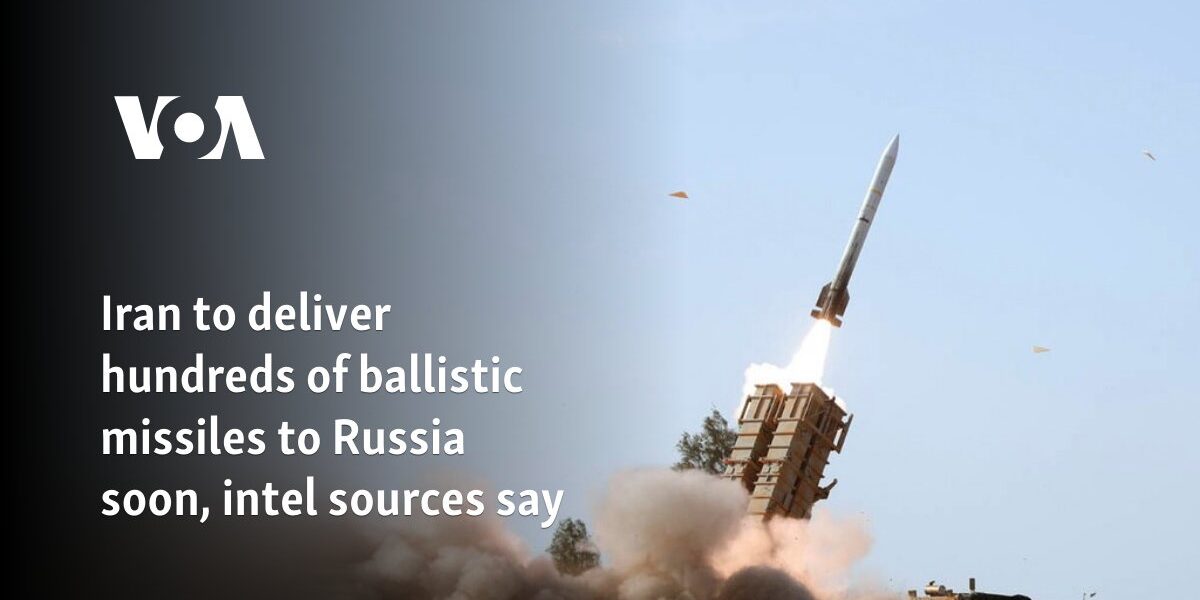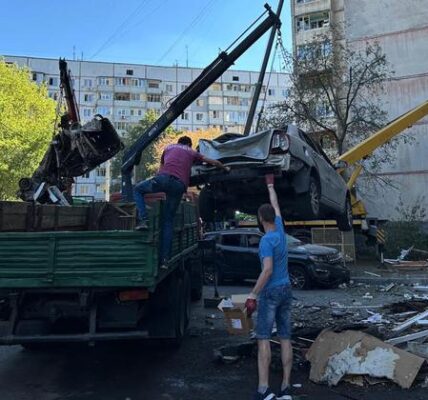
Dozens of Russian military personnel are being trained in Iran to use the Fath-360 close-range ballistic missile system, two European intelligence sources told Reuters, adding that they expected the imminent delivery of hundreds of the satellite-guided weapons to Russia for its war in Ukraine.
Russian defense ministry representatives are believed to have signed a contract on December 13 in Tehran with Iranian officials for the Fath-360 and another ballistic missile system built by Iran’s government-owned Aerospace Industries Organization, or AIO, called the Ababil, said the two intelligence officials, who requested anonymity in order to discuss sensitive matters.
Citing multiple confidential intelligence sources, the officials said that Russian personnel have visited Iran to learn how to operate the Fath-360 defense system, which launches missiles with a maximum range of 120 kilometers and a warhead of 150 kilograms. One of the sources said that “the only next possible” step after training would be actual delivery of the missiles to Russia.
Moscow possesses its own ballistic missiles, but the supply of Fath-360s could allow Russia to use more of its arsenal for targets beyond the front line, while employing Iranian warheads for closer-range targets, a military expert said.
Ready to respond
A spokesman for the U.S. National Security Council said the United States and its NATO allies and G7 partners “are prepared to deliver a swift and severe response if Iran were to move forward with such transfers.” It “would represent a dramatic escalation in Iran’s support for Russia’s war of aggression against Ukraine,” the spokesman said.
“The White House has repeatedly warned of the deepening security partnership between Russia and Iran since the outset of Russia’s full-scale invasion of Ukraine.”
Russia’s defense ministry did not respond to a request for comment.
Iran’s permanent mission to the United Nations in New York said in a statement that the Islamic Republic had forged a long-term strategic partnership with Russia in various areas, including military cooperation.
“Nevertheless, from an ethical standpoint, Iran refrains from transferring any weapons, including missiles, that could potentially be used in the conflict with Ukraine until it is over,” the statement said.
The White House declined to confirm that Iran was training Russian military personnel on the Fath-360 or that it was preparing to ship the weapons to Russia for use against Ukraine.
The two intelligence sources gave no exact time frame for the expected delivery of Fath-360 missiles to Russia but said it would be soon. They did not provide any information on the status of the Ababil contract.
A third intelligence source from another European agency said it had also received information that Russia sent soldiers to Iran to train in the use of Iranian ballistic missile systems, without providing further details.
Such training is standard practice for Iranian weapons supplied to Russia, said the third source, who also declined to be named because of the sensitivity of the information.
A senior Iranian official, who requested anonymity, said Iran had sold missiles and drones to Russia but has not provided Fath-360 missiles. There was no legal prohibition on Tehran selling such weapons to Russia, the source added.
“Iran and Russia engage in the mutual purchase of parts and military equipment. How each country uses this equipment is entirely their decision,” the official said, adding that Iran did not sell weapons to Russia for use in the Ukraine war.
As part of the military cooperation, Iranian and Russian officials often traveled between the two states, the official said.
‘Destabilizing actions’
Until now, Iran’s military support for Moscow has been limited mainly to unmanned Shahed attack drones, which carry a small fraction of the explosives that ballistic missiles do and are easier to shoot down because they are slower.
Iran’s semiofficial Tasnim news agency said in July 2023 that the system had been successfully tested by ground forces of the country’s Islamic Revolutionary Guard Corps, or IRGC.
“Delivery of large numbers of short-range ballistic missiles from Iran to Russia would enable a further increase in pressure on already badly overstretched Ukrainian missile defense systems,” said Justin Bronk, senior research fellow for air power at the Royal United Services Institute, a London defense think tank.
“As ballistic threats, they could only be intercepted reliably by the upper tier of Ukrainian systems,” he said, referring to the most sophisticated air defenses Ukraine has, such as the U.S.-made Patriot and European SAMP/T systems.
Ukraine’s Ministry of Defense did not have immediate comment.
The NSC spokesman noted that Iran’s newly elected President Masoud Pezeshkian “claimed he wanted to moderate Iran’s policies and engage with the world. Destabilizing actions like this fly in the face of that rhetoric.”
U.N. Security Council restrictions on Iran’s export of some missiles, drones and other technologies expired in October 2023.
However, the United States and European Union retained sanctions on Iran’s ballistic missile program amid concerns about exports of weapons to its proxies in the Middle East and to Russia.
Reuters reported in February on deepening military cooperation between Iran and Russia and on Moscow’s interest in Iranian surface-to-surface missiles.
Sources told the news agency at the time that about 400 Fateh-110 longer-range surface-to-surface ballistic missiles had been delivered. But the European intelligence sources told Reuters that according to their information, no transfer had happened yet.
Ukrainian authorities have not publicly reported finding any Iranian missile remnants or debris during the war. Authorities in Kyiv did not immediately respond to a request for comment.
Source: voanews.com




